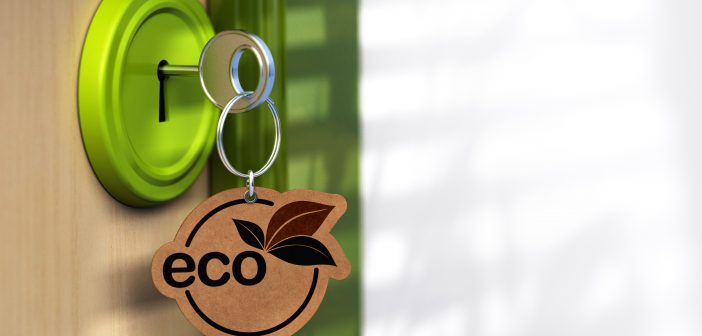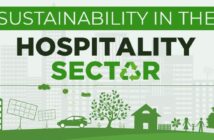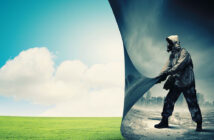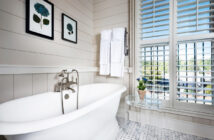These innovations are making a big difference in hotel sustainability.
by GLENN HASEK
Running a sustainable hotel operation has a lot to do with reducing waste and your carbon and water footprint. Recent product and technology advancements are making it easier than ever to do all of the above without compromising the guest experience. Often the energy, water and waste savings can be dramatic – even in the 80 to 90 percent or more range.
Hotel industry veteran Richard Ferrell got the industry’s attention earlier this year when he introduced recyclable sheets, pillow cases and duvet covers. Ferrell, president of Pürlin, LLC, says the linens are used just once by each guest and are made from high-quality microfibers designed to simulate cotton – the same as those used in products such as baby diapers and athletic wear. The linens are produced and recycled by companies based in Florida and North Carolina. Once heated to 500+ degrees Fahrenheit, they are liquefied and become the ingredients for making brand new sheets, pillowcases and duvet covers, thus resulting in zero waste.
“This will forever change hotel laundry,” Ferrell says. “You will never sleep on a sheet or pillow case that anyone has ever used. It is a paradigm shift that will change the way hoteliers and travelers think about bed linens.”
In a typical laundry operation, the quality of cotton-based sheets and pillow cases is diminished over time as laundry detergent, bleaches and other chemicals break down the cellulosic fibers. Stains from women’s makeup can also cause laundering issues resulting in the disposal of the damaged item.
Each Pürlin sheet and pillowcase is hypoallergenic and saves water – selling points for any green hotel – and Pürlin will offer tent cards for use in guestrooms to explain the advantages of the linens. “We believe that Pürlin bed linens will be viewed as an amenity by the guest,” Ferrell says.
“I learned that it takes 2,800 gallons of water to make one queen-size cotton sheet,” Ferrell says. “Today, it takes less than one gallon of water to make a Pürlin sheet.” Pürlin linens are delivered folded and ready to use, generating additional laundry savings.
In another advancement in laundry, Xeros, the innovator of polymer cleaning technologies, recently announced that 33 hotels and commercial laundries have now joined the Xeros Million Gallon Club, each saving more than one million gallons of water using Xeros’ award-winning polymer cleaning laundry system. The patented system uses up to 80 percent less water, up to 50 percent less energy, and approximately 50 percent less detergent than traditional systems.
From glass bottles to sand
Not long ago, beer and wine bottles at the 97-room Ranch at Laguna Beach in California left the property in the same shape in which they came – only empty and bound for an off-site recycling center. Today, those same types of bottles stay at the property but are pulverized by a GL Sand Machine that turns the glass into sand that can be used to replenish the sand in bunkers on the resort’s golf course or the sand at the nearby beach. Signage on the golf course explains the story behind the new sand. According to General Manager Kurt Bjorkman, the resort is the first property in the continental United States to use a GL Sand Machine.
Bjorkman learned about the machine a couple of years ago, and today employees spend about 20 hours a week pulverizing the bottles into five different grain sizes. “It will take anything about the shape of a wine bottle – even oyster shells,” Bjorkman says. “That material is used on the property’s bocce ball courts.”
For a wedding, Bjorkman says a couple’s champagne bottles were pulverized into sand. That sand was then given to them in a locket.
Also putting waste bottles to good use is Glass Recycled Surfaces. The company turns post-consumer glass bottles, industrial glass and recycled porcelain fixtures into counter tops. By mixing crushed glass with an epoxy resin, the company has created thousands of custom designs for residential, hotel and multifamily clients. In one example, the Beach Collection, one can bring coastal elegance into a project by adding locally sourced sea shells and oyster shells to countertops. Glass Recycled Surfaces also produces glass mulch, which retains moisture and reduces evaporation rather than absorbing water like wood mulch.
Shower water recycled
From the bedroom to back of house to the bathroom, innovations are making it easy to save big.
For example, Orbital Systems, is now offering a closed-loop shower system that uses certified space technology to analyze water quality and recirculate and purify shower water. The Oas Shower is an award winning Scandinavian design that provides guests with a spa-like shower experience, while reducing water waste and energy use up to 90 percent and 80 percent, respectively. The Oas uses roughly 2.6 gallons for the entire duration of the shower.
Additionally, Sonoma Forge just announced a new hands-free, automated faucet, which incorporates an electromagnetic proximity sensor. Sans Hands uses the basic principal of electromagnetism. Simply speaking, the components include a spout, a low-voltage current from an electrical source (either battery or plug-in) and an electronic “brain,” supplying an electromagnetic field to the spout. When a user approaches the faucet, the electromagnetic field is interrupted, which opens and closes the valve.
Introduced at this year’s Kitchen & Bath Industry Show, Niagara Conservation’s Nano toilet is the latest in the company’s portfolio of products that seek to save the world’s water through everyday ingenuity. Patented vacuum-assist flush technology means the Nano uses an average of only 0.6 gallons-per-flush. Niagara says it is the most water-efficient toilet on the planet.
Sofidel, a provider of paper for hygienic and domestic use, recently debuted Papernet Bio Tech, the first toilet paper to use innovative biologic active tissue paper (BATP) technology. When the paper makes contact with water, natural, non-pathogenic microorganisms are activated and produce enzymes to eat away dirt. Once their work is complete, the enzymes biodegrade, leaving no residue or negative environmental impact.
In about four weeks, the sanitizing effect of Papernet’s Bio Tech toilet paper helps to free pipes, septic tanks and sewer systems of dirt to prevent blockages. Sample studies prove that the exclusive use of Bio Tech drastically reduces the need to pump out the sewer system and enables total savings of up to 40 percent compared with standard toilet paper. The product also helps fight unpleasant restroom odors that can turn away guests and attract insects.
Tableware made from wheat bran
One Poland-based company, Biotrem, with a distributor here in the United States, has developed tableware made from wheat bran. And yes, you can eat it. Made in Poland, the items consist primarily of wheat bran and small amounts of water. The rest is done by high pressure and high temperature. From one ton of pure, edible wheat bran, Biotrem can produce up to 10,000 units of plates or bowls. The items are fully biodegradable – through composting – in 30 days.
Another company launching an initiative to reduce waste is office furniture maker Humanscale. It will introduce a chair this year made from repurposed plastic fishing nets. “By working collectively and repurposing materials that would otherwise pollute our natural environment, we can achieve a more positive impact on our oceans and our planet,” said Robert King, Humanscale’s founder and CEO.
Glenn Hasek is editor of Green Lodging News. He can be reached at [email protected]. To subscribe to the Green Lodging News enewsletter, go to www.greenlodgingnews.com.




